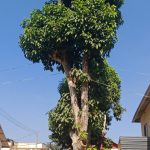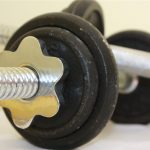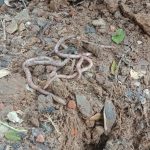RESPIRATION IN PLANTS
Plants show cellular respiration as there is no system. The site is the mitochondrion and respiratory substrate is glucose. Respiration in plants involves the oxidation of food to release energy in the form of ATP which is the energy currency of the cell.
Plants take in Oxygen and release CO2 during respiration through stomata. When oxygen is utilised CO2, water and energy is released. This is aerobic respiration but in some organisms like yeasts, respiration is anaerobic leading to incomplete oxidation of glucose.
In both aerobic and anaerobic types partial breakdown of glucose to produce pyruvic acid is a common stage which is called Glycolysis. It takes place in the cytoplasm and is commonly called the EMP pathway. Glycolysis is a ten step process which results in breaking down Glucose to two molecules of pyruvic acid and releasing two ATP and two NADH2 molecules
In anaerobic respiration and fermentation pyruvic acid is formed and only two ATP molecules are formed. In humans, muscles undergo anaerobic respiration during vigorous exercise and form lactic acid from pyruvic acid at the end of glycolysis. Fermentation is type of anaerobic respiration seen in prokaryotes. Here the end product is alcohol and CO2 and two molecules of ATP
In aerobes (higher plants and animals), pyruvic acid is further broken down to CO2, and water through Kreb’s cycle and harvest of ATP from the NADH2 and FADH2 through oxidative phosphorylation. A large amount of energy is released. The crucial events in aerobic respiration are:
The complete oxidation of pyruvate by the stepwise removal of all the hydrogen atoms leaving three molecules of CO2 which takes place in the mitochondrial matrix and is called Kreb’s cycle
The passing on of the electrons removed as part of the hydrogen atoms to molecular oxygen with simultaneous synthesis of ATP which takes place in the inner mitochondrial membrane and is called oxidative phosphorylation
The pyruvic acid which enters the mitochondrion first undergoes oxidative decarboxylation to form a 2-carbon compound called acetyl coenzyme A which is the key compound of the Krebs’ cycle
The Krebs’ cycle is also called the Tricarboxylic acid cycle as the early intermediates like citric acid, Isocitric acid and a-ketoglutaric acid are all tricarboxylic acids.
The TCA cycle starts with the condensation of acetyl group with a 4-carbon oxaloacetic acid to form citric acid. The reaction is catalysed by citrate synthase.
Citrate is then isomerised to isocitrate which then undergoes two successive oxidative decarboxylation to form a-ketoglutaric acid and then succinyl CoA.
Succinyl CoA releases CoA to form succinic acid and forms GTP which is a substrate level phosphorylation step. Succinic acid then becomes fumaric acid by release of FADH2 and become malic acid which finally regenerates OAA.
Oxidative phosphorylation is used to release and utilise energy stored in the NADH2 and FADH2
This happens when they are oxidised through the electron transport chain and the electrons are passed on to O2 resulting in the formation of water. This is called the electron transport system which has carriers such a NADH dehydrogenase, designated as complex I followed by FADH2 which is complex II. Cytochrome bc1 is Complex III and cytochrome c is complex IV. The enzyme ATP ase is complex V. The eeelectrons when they move from I to II generate an ATP and another one from II to III and a third ATP when they move from III to IV.
Therfore each NADH2 can release 3 ATP molecules while FADH2 releases only 2 ATP molecules. Thus the net gain of ATP for every molecule of glucose undergoing complete oxidation during aerobic respiration is a total of 36.
Respiration brings about breakdown of glucose and so it may considered as an anabolic process, but the intermediates of glycolysis and Krebs cycle are involved in a number of other biosynthetic processes and so it is referred to as a amphibolic process for example PEP is involved in C4 pathway, a-ketoglutaric acid in aminoacid synthesis and acetyl CoA in fatty acid metabolism.
Respiratory Quotient is the ratio between the Volume of carbon-dioxide evolved to the Volume of Oxygen absorbed. Different substrates have different RQ values that determine their ability to release energy. Carbohydrates have a RQ of 1 and are called ideal substrates. The RQ of lipids is less than 1 and for tripalmitin it is 0.7 and for proteins it is 0.9.











